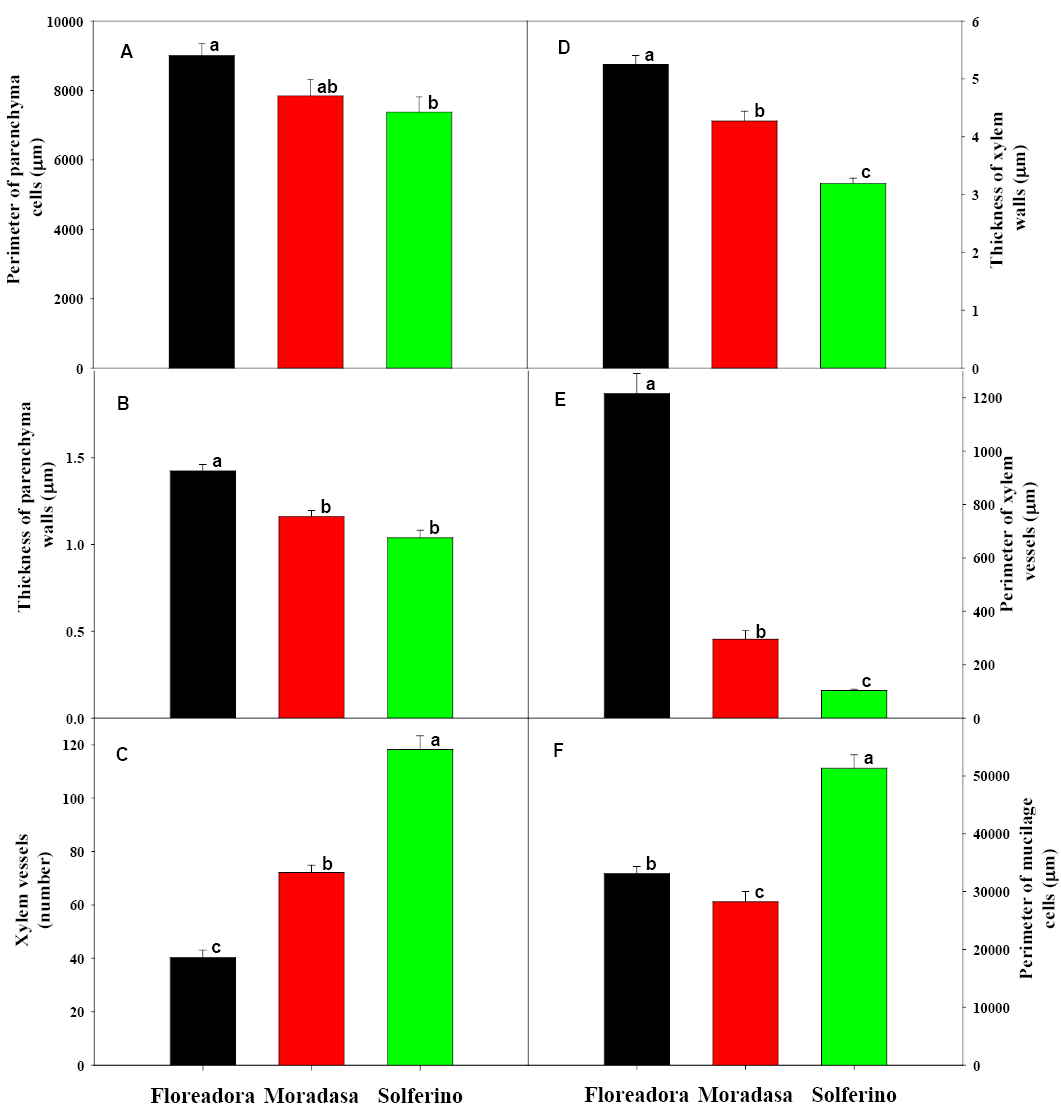Memories of the Agricultural and Livestock Area of the VI CCIUTM, Ecuador
Memories of the Agricultural and Livestock Area of the VI CCIUTM, Ecuador
Adriana Beatriz Sánchez-Urdaneta1,2*, Gisela del Carmen Rivero-Maldonado2, Cecilia Beatriz Peña-Valdivia3 and Dianelis del Carmen Sánchez-Urdaneta4
Effect of prickly pear cultivars on cuticle (A), epidermis (B), and collenchyma thickness (C) and the number of collenchyma strata (D), calcium oxalate cells (E), and parenchyma cells (F) present in 1-year-old cladodes.
Longitudinal sections of prickly pear cladodes (Opuntia ficus-indica) of the Floreadora cultivar. C= cuticle (A), E= epidermis (B), Col= collenchyma (C), D= druses (calcium oxalate crystals) (D, J), Est= stoma (E), P= parenchyma (F, G, I), M= mucilage (H), X= xylem (F, G). Bar= A, B, F, and J 40 µm, 10X; C, D, E, G, H, and I 10 µm, 40X.
Longitudinal sections of prickly pear cladodes (Opuntia ficus-indica) of the Moradaza cultivar. C= cuticle (A, C), E= epidermis (A, C), Col= collenchyma (A, C), D= druses (calcium oxalate crystals) (D, H), P= parenchyma (B, D, F, G, H), M= mucilage (F), X= xylem (D, E). Bar= A, B, D, F, and H 40 µm, 10X; C, E, and G 10 µm, 40X.
Longitudinal sections of prickly pear cladodes (Opuntia ficus-indica) of the Solferino cultivar. C= cuticle (A, C), E= epidermis (A, C), Col= collenchyma (A, C), D= druses (calcium oxalate crystals) (C, H), P= parenchyma (B, D, F, G, H), M= mucilage (F), X= xylem (D, E). Bar= A, B, F, and J 40 µm, 10X; C, D, E, G, H, and I 10 µm, 40X.
Effect of prickly pear cultivars on the perimeter of parenchyma cells (A), xylem vessels (E), and mucilage cells (F); the thickness of parenchyma cell walls (B) and xylem cells (D), and the number of xylem vessels (C) present in 1-year-old cladodes.












